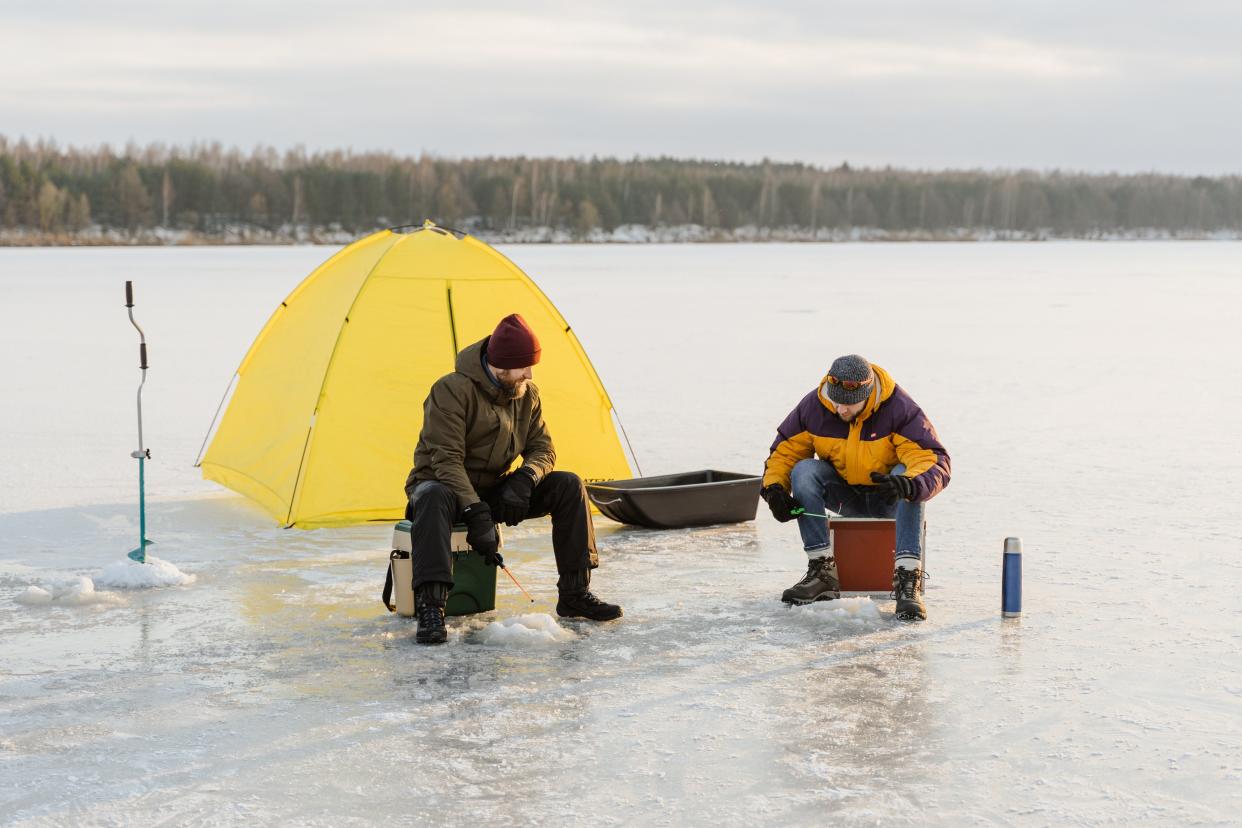Ice fishing in Ohio can be dangerous if proper safety measures aren't taken

Humans, even those as hardy as Ohio's ice fishers, aren’t especially well built for a full-body plunge into icy water.
Depending on the water’s frigidity a “cold shock response occurs within the first one to four minutes of cold-water immersion,” writes Dr. Alan Steinman, a maritime medical expert, in the book, "Wilderness Medicine."
An involuntary reaction to cold water known as the gasp response presents the initial danger: The inability to hold one’s breath can cause drowning if the head is submerged, Steinman writes.
Hyperventilation can cause decreased blood flow to the brain and quickly result in “disorientation, loss of consciousness and drowning.”
Another cause of death by immersion is arrhythmia triggered by the speedy need for the heart to pump harder because of internal responses to rapid skin cooling.
Hypothermia takes longer to kill — though still not long — in icy water, which can cool the body about 24 times faster than air of comparable temperature.
“A person who is immersed in near-freezing water … will have symptoms of mild hypothermia in under two minutes and will be unconscious in less than 15 minutes, with an expected survival time of 15 to 45 minutes,” writes Dr. John P. Cunha, a board-certified physician of emergency medicine.
Many an angler, nonetheless, will rush to frozen water given the opportunity.
An ice-up of Ohio waterways that’s forecast to continue for at least a couple of weeks requires a review of some basics.
One needs at least 4 inches of ice for walking, according to generally accepted guidelines. Snowmobiles and ATVs require at least 6 inches. Small cars and pickups shouldn’t be driven on less than 8 to 12 inches, and larger vehicles call for a 12-inch cover.
Fresh ice is harder than older, opaque ice.
Ice thickness can vary considerably. Erosion from below can occur where streams or springs enter reservoirs. Surprisingly strong, ice-eating currents flow in large bodies of water such as Lake Erie.
Anglers can use spud bars to test ice thickness. Once a path is laid out, it’s a good idea to stick to it.
Safety equipment should include a charged cell phone, a length of floating rope and a pair of handpicks.
Handpicks can save your life after a plunge by allowing you to dig into the surrounding ice to pull yourself out. Picks can be purchased or made. A pair of screwdrivers or large nails can substitute as long as they are easily accessible.
One end of a floating rope can be lassoed to someone in trouble. Such a rescue is safer than trying to edge close to the hole where someone’s gone through thin ice.
The phone, of course, can be used to call for help. Large-scale rescues have taken place on Lake Erie when a sizeable sheet of ice with multiple fishermen aboard has broken off from the mainland.
Some ice anglers wear a life jacket or float coat. All should inform friends or family members where they intend to fish and what time they plan to return.
This article originally appeared on The Columbus Dispatch: Tips for Ohio ice fishers on how to keep safe this winter

